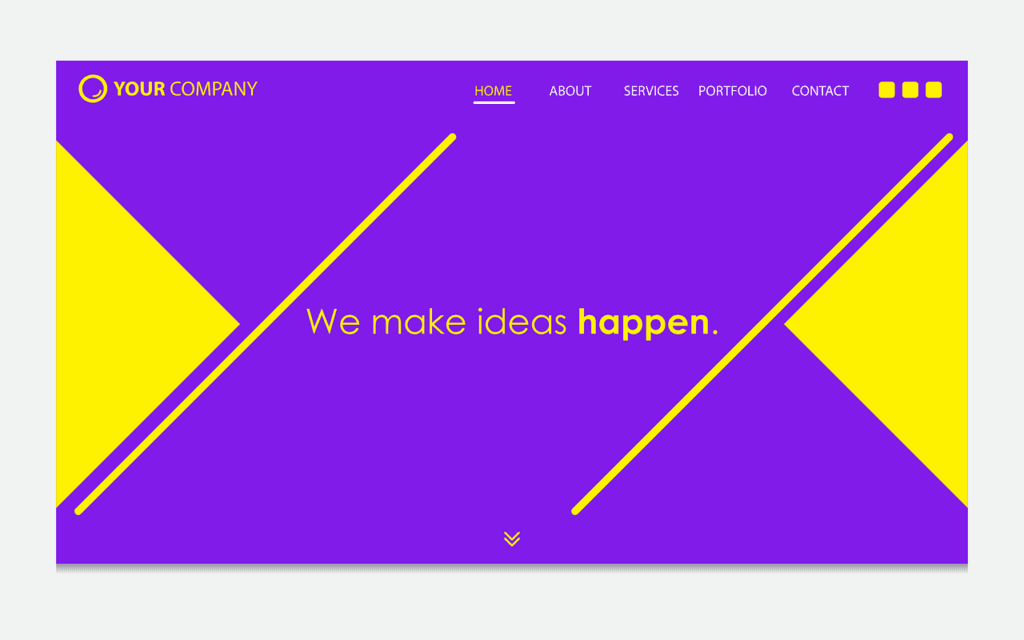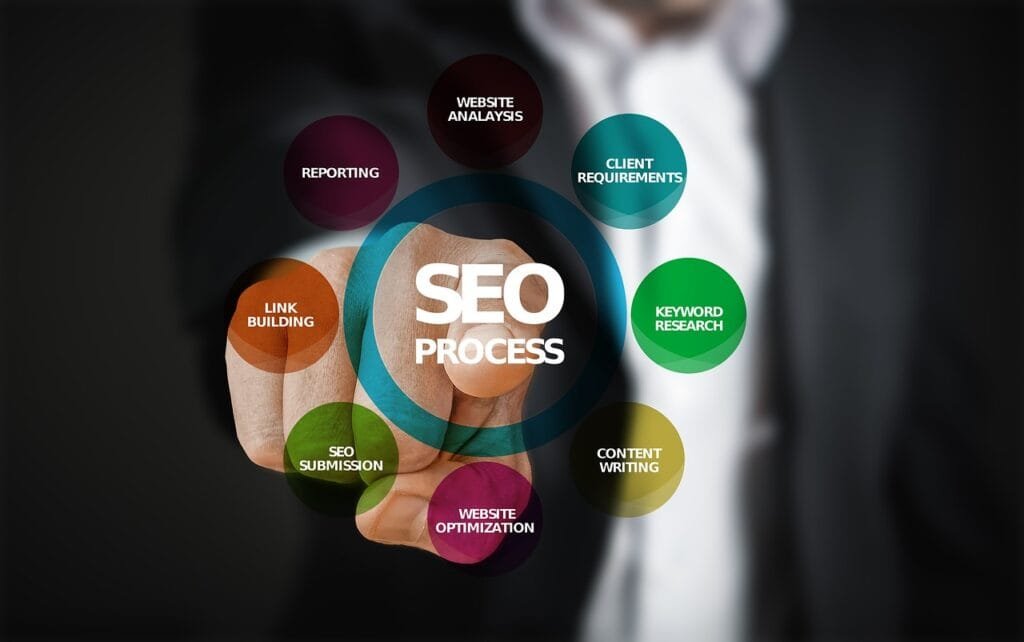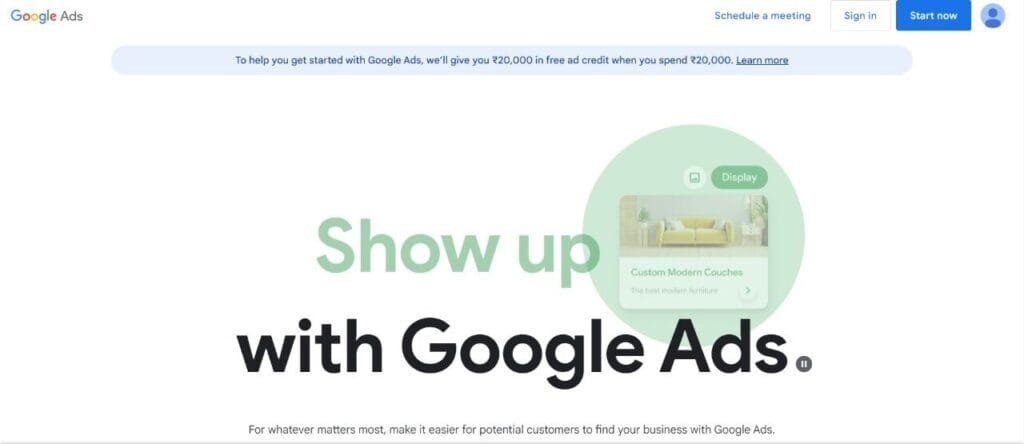This Article has been revised, edited and added to, by Poulomi Chakraborty.
- The Basics of Website Accessibility and SEO
- Accessibility and SEO: A Comparison
- Implementing Accessibility Features for Better SEO
- Specific Strategies for Maintaining an Accessible Healthcare Website
- Simplifying Navigation and Layout
- Using Descriptive Link Text
- Ensuring Form Accessibility
- Creating Accessible PDFs and Documents
- Providing Multiple Ways to Contact
- Ensuring Content Readability
- Regularly Updating Content
- Leveraging Assistive Technology
- Educating Your Team
- Monitoring Accessibility with Analytics
- Best Practices for Ongoing Accessibility and SEO Optimization
- Regular Accessibility Audits
- Staying Updated with Accessibility Standards
- Implementing ARIA (Accessible Rich Internet Applications) Roles
- Enhancing Visual Design for Accessibility
- Using Structured Data Markup
- Optimizing Content for Accessibility
- Incorporating User Feedback
- Ensuring Fast Load Times
- Providing Accessible Documentation
- Collaborating with Accessibility Experts
- Advanced Techniques for Website Accessibility and SEO
- More Detailed Strategies and Future Trends in Accessibility and SEO
- Advanced Content Structuring
- Implementing ARIA Landmarks
- Enhancing Accessibility with Progressive Web Apps (PWAs)
- Utilizing Chatbots for Improved Accessibility
- Personalizing User Experience
- Predictive Text and Autocomplete Features
- The Role of Blockchain in Accessibility
- Preparing for Future Accessibility Standards
- Collaboration and Community Involvement
- Measuring the Impact of Accessibility on SEO
- Expert Opinion
- Conclusion
In today’s digital world, having a website is essential for any business, especially in healthcare. But it’s not just about having a website; it’s about having an accessible one. Accessibility means making sure your website can be used by everyone, including people with disabilities. This is not only a matter of social responsibility but also a crucial factor in healthcare SEO (Search Engine Optimization). When your website is accessible, it can improve your search engine rankings, increase traffic, and ensure a better user experience for all visitors.
In this article, we’ll explore why website accessibility is so important for healthcare SEO. We’ll dive into the specifics of how accessibility impacts your SEO efforts and provide practical tips to make your website more accessible. By the end, you’ll understand how improving accessibility can benefit your patients and your business.
The Basics of Website Accessibility and SEO

Before we get into the details, let’s cover some basics. Website accessibility means that people with disabilities can use your website effectively. This includes those with visual, auditory, motor, and cognitive impairments. Accessibility features might include text descriptions for images, transcripts for audio content, and easy navigation.
SEO, on the other hand, is the practice of optimizing your website to rank higher in search engine results. This involves using keywords, creating quality content, and ensuring your site is technically sound. But what many people don’t realize is that accessibility and SEO go hand in hand.
When search engines like Google crawl your site, they look for certain elements that also happen to make your site more accessible. For example, using alt text for images helps visually impaired users and also provides context to search engines. Similarly, a well-structured site with clear headings is easier to navigate for everyone, including search engine bots.
Accessibility and SEO: A Comparison

To understand why accessibility matters for SEO, let’s compare the two:
Accessibility Enhances User Experience
Accessibility is all about creating a better user experience. When your site is easy to navigate and understand, users are more likely to stay longer, engage with your content, and return in the future. This is particularly important in healthcare, where your audience might include elderly patients or those with disabilities.
On the SEO side, user experience is a significant ranking factor. Google wants to show the best possible results to its users, so it prioritizes sites that offer a great user experience. If your site is accessible, it means users can find what they’re looking for quickly and easily, which can improve your SEO rankings.
Accessibility Boosts Engagement Metrics
When your website is accessible, it encourages users to interact more with your content. They can read your articles, watch your videos, and fill out forms without any issues. This increased engagement can lead to lower bounce rates and higher time spent on your site.
From an SEO perspective, these engagement metrics are crucial. Search engines take into account how users interact with your site. If they see that users are spending more time on your pages and engaging with your content, they’ll assume your site is valuable and rank it higher.
Accessibility Increases Reach
Making your website accessible means you can reach a broader audience. People with disabilities represent a significant portion of the population, and by excluding them, you’re missing out on potential patients and clients. An accessible website ensures that everyone, regardless of their abilities, can access your information and services.
For SEO, reaching a broader audience means more traffic and more opportunities to convert visitors into patients. When your site is accessible, it can attract a diverse audience, leading to more visits and higher search engine rankings.
Accessibility and Mobile Usability
Mobile usability is another area where accessibility and SEO overlap. Many accessibility features, such as responsive design and easy navigation, also improve the mobile experience. In healthcare, where patients often access information on the go, having a mobile-friendly, accessible site is crucial.
Google has been prioritizing mobile-friendly sites for years, and with the shift to mobile-first indexing, it’s more important than ever. An accessible site that works well on mobile devices will rank better in search results, driving more traffic to your site.
Implementing Accessibility Features for Better SEO

To make your healthcare website more accessible and improve your SEO, you’ll need to implement specific features that cater to various disabilities. These improvements not only help people with disabilities but also enhance the overall usability of your site, making it more appealing to all users and search engines alike.
Using Alt Text for Images
Alt text, or alternative text, is a description of an image that is displayed if the image cannot be seen. This text helps visually impaired users understand the content of the images on your site.
Search engines also use alt text to understand the context of the images, which can improve your SEO. When writing alt text, be descriptive and concise, providing enough detail to convey the image’s purpose without being overly verbose.
Providing Transcripts and Captions for Multimedia
Videos and audio content are popular on healthcare websites, but they can be inaccessible to people with hearing impairments. Providing transcripts for audio and captions for videos ensures that all users can access your content.
This practice not only makes your site more inclusive but also gives search engines more text to index, which can improve your rankings. Transcripts and captions can also make your content more engaging, as users can read along or refer back to specific parts of the content.
Ensuring Keyboard Accessibility
Many users with disabilities rely on keyboards rather than a mouse to navigate websites. Ensuring that all interactive elements on your site, such as forms, buttons, and links, can be accessed and operated via keyboard is crucial.
This involves using proper HTML markup and ARIA (Accessible Rich Internet Applications) roles to define how elements behave and ensuring that the tab order is logical. A site that is easy to navigate with a keyboard provides a better user experience, which can positively impact your SEO.
Implementing Clear and Descriptive Headings
Using clear and descriptive headings helps all users navigate your site more easily. For screen reader users, headings provide a way to jump between sections quickly. For search engines, headings indicate the structure and hierarchy of your content, helping them understand the main topics on your page.
When creating headings, use H1 for the main title, H2 for subheadings, and H3 for further subsections. This structured approach makes your content more readable and easier to index.
Ensuring Color Contrast and Readability
Proper color contrast is essential for users with visual impairments, such as color blindness. Ensuring that text stands out clearly against the background can make your content more readable. Tools and guidelines are available to help you choose color combinations that meet accessibility standards.
High readability not only helps users with visual impairments but also improves the overall user experience, leading to longer time spent on your site and better engagement metrics, which are beneficial for SEO.
Designing for Mobile Accessibility
With the increasing use of mobile devices, ensuring your site is accessible on smaller screens is crucial. This involves using responsive design techniques to ensure your content adapts to different screen sizes and orientations.
Simplifying navigation and ensuring that touch targets (buttons and links) are large enough to be easily tapped are also important. A mobile-friendly, accessible site will perform better in search rankings, as search engines like Google prioritize mobile usability.
Conducting Regular Accessibility Audits
Regularly auditing your website for accessibility issues is essential to maintain an inclusive user experience. Tools and services are available that can help identify areas where your site may fall short.
Addressing these issues promptly not only keeps your site accessible but also helps maintain your SEO performance. Keeping up with the latest accessibility standards and guidelines ensures that your site remains compliant and user-friendly.
Specific Strategies for Maintaining an Accessible Healthcare Website

Continuing to enhance the accessibility of your healthcare website involves implementing specific strategies and adhering to best practices. These efforts will not only improve accessibility but also boost your SEO performance.
Simplifying Navigation and Layout
A simple and intuitive navigation structure is crucial for accessibility. Users should be able to find what they need quickly and easily, regardless of their abilities. This includes having a clear menu with straightforward labels and a consistent layout across all pages.
Using a “skip to content” link at the top of your pages can help users who rely on screen readers or keyboard navigation jump directly to the main content, bypassing repetitive navigation links.
Using Descriptive Link Text
Links are essential for navigation, and their text should clearly describe the destination. Avoid using vague phrases like “click here” or “read more.” Instead, use descriptive text that provides context about where the link will take the user.
This practice benefits screen reader users and helps search engines understand the relevance of the linked content, improving your SEO.
Ensuring Form Accessibility
Forms are common on healthcare websites for tasks like booking appointments or requesting information. To make forms accessible, label each field clearly and provide instructions on how to complete them.
Use fieldsets and legends to group related fields, and ensure that error messages are informative and easy to understand. Additionally, all form elements should be operable via keyboard.
Creating Accessible PDFs and Documents
Many healthcare websites host PDFs and other documents for users to download. Ensuring these documents are accessible is as important as the website itself. Use proper headings, alt text for images, and make sure that text can be read by screen readers.
Offering HTML versions of these documents can also improve accessibility and SEO, as search engines can crawl and index HTML content more effectively.
Providing Multiple Ways to Contact
Offering various ways for users to contact your healthcare practice can enhance accessibility. This includes phone numbers, email addresses, and contact forms.
Additionally, consider offering a chat feature or video conferencing options for those who might prefer or require these methods. Making contact information easily accessible and prominent on your website can improve user experience and engagement, positively affecting your SEO.
Ensuring Content Readability
Content readability is a significant aspect of accessibility. Use plain language and avoid medical jargon when possible. Break up long paragraphs into shorter ones, and use subheadings to organize content into manageable sections.
Including images and videos with descriptive text can also help convey complex information more clearly. Readable content keeps users on your site longer and encourages them to return, which can boost your SEO.
Regularly Updating Content
Keeping your content up to date is crucial for both accessibility and SEO. Regular updates ensure that your information is accurate and relevant. This is particularly important in healthcare, where outdated information can be misleading or harmful.
Regularly review and revise your content, and consider adding new articles or resources to address common questions or concerns. Fresh content can attract new visitors and keep existing ones engaged.
Leveraging Assistive Technology
Leveraging assistive technology can greatly enhance accessibility. Screen readers, voice recognition software, and other assistive tools help users navigate and interact with your site.
Testing your website with these technologies can help identify and address potential accessibility issues. Ensuring compatibility with these tools not only improves user experience but can also enhance your site‘s SEO by making it more user-friendly and inclusive.
Educating Your Team
Ensuring that your entire team understands the importance of accessibility can lead to better practices across your organization. Provide training on accessibility standards and best practices, and encourage ongoing learning.
When everyone from content creators to developers prioritizes accessibility, your website is more likely to stay compliant and user-friendly. This commitment to accessibility can also reflect positively on your brand, attracting more users and improving your SEO.
Monitoring Accessibility with Analytics
Using analytics tools to monitor your site’s accessibility can provide valuable insights. Look for metrics like bounce rate, time on site, and user flow to understand how visitors interact with your content.
Identifying patterns can help you pinpoint areas where accessibility might be lacking. Regularly reviewing these metrics and making data-driven adjustments can improve user experience and SEO performance over time.

Best Practices for Ongoing Accessibility and SEO Optimization
Ensuring that your healthcare website remains accessible and optimized for SEO is an ongoing process. Implementing the following best practices will help you maintain high standards for accessibility and SEO, ensuring that your site continues to provide a positive experience for all users.
Regular Accessibility Audits
Conducting regular accessibility audits is essential for maintaining a user-friendly website. These audits involve reviewing your site to identify and address any accessibility issues. Use automated tools like WAVE, Axe, or Lighthouse, and supplement these with manual testing.
Manual testing can help you catch issues that automated tools might miss, such as the readability of your content or the effectiveness of keyboard navigation. Regular audits help ensure that your site remains compliant with accessibility standards and offers a seamless experience for all users.
Staying Updated with Accessibility Standards
Accessibility standards and guidelines, such as the Web Content Accessibility Guidelines (WCAG), are periodically updated to reflect new insights and technologies. Staying informed about these updates is crucial for maintaining an accessible website.
Subscribe to newsletters from organizations like the World Wide Web Consortium (W3C) and attend webinars or conferences on accessibility. Keeping up with the latest standards ensures that your site remains compliant and provides the best possible experience for users with disabilities.
Implementing ARIA (Accessible Rich Internet Applications) Roles
ARIA roles can enhance the accessibility of dynamic content and web applications. These roles provide additional information to assistive technologies, making it easier for users to navigate and interact with complex interfaces.
For example, using ARIA roles can improve the accessibility of interactive elements like sliders, menus, and tabs. Proper implementation of ARIA roles ensures that your site is accessible to all users, which can positively impact your SEO by improving user experience and engagement metrics.
Enhancing Visual Design for Accessibility
Good visual design is critical for accessibility. This includes using high-contrast colors, legible fonts, and sufficient spacing between elements. Avoid relying solely on color to convey information, as this can be problematic for users with color blindness.
Ensure that text is large enough to be easily readable, and consider offering a tool to adjust font size. A visually accessible design improves usability for all visitors, leading to better engagement and higher search engine rankings.
Using Structured Data Markup
Structured data markup, such as schema.org, helps search engines understand the content and structure of your website. This markup can enhance your search engine results with rich snippets, which provide additional information directly in the search results.
For healthcare websites, structured data can highlight critical information such as services offered, operating hours, and patient reviews. Implementing structured data markup can improve your site’s visibility in search results, driving more traffic and improving SEO.
Optimizing Content for Accessibility
Creating content with accessibility in mind involves more than just plain language and good structure. Use headings and subheadings to organize your content, making it easier for users to skim and find the information they need. Incorporate multimedia elements thoughtfully, ensuring that they are accompanied by text alternatives like captions and transcripts.
When embedding videos, use player controls that are accessible via keyboard and screen readers. Accessible content improves user experience and can lead to better search engine rankings by keeping visitors engaged.
Incorporating User Feedback
User feedback is invaluable for identifying and addressing accessibility issues. Encourage visitors to provide feedback on their experience using your site, and make it easy for them to report any problems they encounter.
Use surveys, feedback forms, and usability testing sessions to gather insights. Act on this feedback to make continuous improvements. Demonstrating a commitment to accessibility can build trust with your audience and enhance your site’s reputation, positively influencing SEO.
Ensuring Fast Load Times
Page speed is a crucial factor for both accessibility and SEO. Slow-loading pages can frustrate users, particularly those with disabilities who may rely on assistive technologies that can further slow down their experience.
Optimize your website’s performance by compressing images, leveraging browser caching, and minimizing the use of heavy scripts. A fast-loading website improves user experience, reduces bounce rates, and can lead to higher search engine rankings.
Providing Accessible Documentation
Offering accessible documentation and support materials can enhance the user experience. This includes user guides, FAQs, and help articles that are easy to understand and navigate.
Ensure that these resources are available in multiple formats, such as text, audio, and video, to accommodate different needs. Accessible documentation helps users make the most of your website and services, leading to higher satisfaction and better engagement metrics.
Collaborating with Accessibility Experts
Working with accessibility experts can provide valuable insights and help you implement best practices effectively. These experts can conduct thorough audits, provide training for your team, and offer recommendations for ongoing improvements.
Collaboration with accessibility professionals ensures that your website remains inclusive and compliant with the latest standards, enhancing both user experience and SEO performance.
Advanced Techniques for Website Accessibility and SEO

As we delve deeper into the importance of accessibility for healthcare websites, it’s essential to explore advanced techniques that can further enhance both accessibility and SEO. These strategies can help ensure that your site not only meets the basic standards but also provides an exceptional experience for all users.
Implementing Voice Search Optimization
Voice search is becoming increasingly popular, especially for users with disabilities who may find it easier to use voice commands than typing. Optimizing your website for voice search involves using natural language processing and focusing on conversational keywords.
This means incorporating questions and answers into your content, as voice searches often take the form of questions. For example, instead of just targeting keywords like “flu symptoms,” you might include phrases like “What are the symptoms of the flu?”
Optimizing for voice search can make your content more accessible to a broader audience and improve your SEO as voice search becomes more prevalent.
Utilizing AI and Machine Learning for Accessibility
Artificial Intelligence (AI) and Machine Learning (ML) technologies can significantly enhance website accessibility. AI-powered tools can automatically generate alt text for images, transcribe audio content, and even provide real-time translations for users who speak different languages.
Machine learning algorithms can analyze user behavior to identify accessibility issues and suggest improvements. By leveraging AI and ML, you can create a more personalized and accessible experience for your users, which can lead to better engagement and higher search engine rankings.
Creating a Comprehensive Accessibility Statement
An accessibility statement is a declaration of your commitment to making your website accessible to all users. This statement should outline the measures you’ve taken to ensure accessibility, provide contact information for users to report issues, and describe your ongoing efforts to improve accessibility.
Including an accessibility statement on your website not only demonstrates your commitment to inclusivity but also builds trust with your audience. This transparency can enhance your reputation and, by extension, your SEO.
Enhancing Semantic HTML for Better Accessibility
Using semantic HTML helps both users and search engines understand the structure and meaning of your content. Semantic elements like <article>, <section>, <nav>, and <aside> provide context and improve the navigability of your site.
For example, using the <nav> element for navigation menus helps screen readers identify and skip directly to the navigation section. Proper use of semantic HTML makes your website more accessible and can improve your SEO by making it easier for search engines to index your content.
The Future of Accessibility and SEO
As technology continues to evolve, so will the standards and expectations for website accessibility and SEO. Staying ahead of these changes requires a proactive approach. Here are some future trends to watch for:
Increased Focus on User Experience
User experience (UX) will continue to be a critical factor in both accessibility and SEO. Websites that provide a seamless, enjoyable experience for all users will be favored by search engines. This means continuously refining your design, content, and functionality to meet the needs of your audience.
Integration of Virtual and Augmented Reality
Virtual Reality (VR) and Augmented Reality (AR) are becoming more mainstream, offering new opportunities for accessibility. These technologies can create immersive experiences for users with disabilities, such as virtual tours of healthcare facilities or AR-enhanced instructions for medical procedures. Incorporating VR and AR into your website can enhance accessibility and set you apart from competitors.
Adoption of Inclusive Design Principles
Inclusive design goes beyond accessibility to consider the diverse needs of all users. This approach involves designing products and services that can be used by as many people as possible, regardless of their abilities. By adopting inclusive design principles, you can create a more welcoming and engaging website, improving both accessibility and SEO.
More Detailed Strategies and Future Trends in Accessibility and SEO

Continuing with our deep dive into website accessibility and its impact on healthcare SEO, let’s explore some more detailed strategies and emerging trends. These approaches will help you stay ahead of the curve and ensure that your website remains accessible, user-friendly, and optimized for search engines.
Advanced Content Structuring
Proper content structuring is essential for accessibility and SEO. This involves organizing your content logically and using HTML elements correctly. For example, using <header>, <footer>, <main>, and <article> elements can help both users and search engines understand the layout and purpose of your content. Ensure that headings follow a hierarchical order (H1 for main titles, H2 for subsections, H3 for further subsections) to provide a clear and accessible structure.
Implementing ARIA Landmarks
ARIA landmarks help screen readers identify and navigate significant parts of a webpage. These landmarks include roles like banner, navigation, main, complementary, and contentinfo. Properly implementing these landmarks can enhance the user experience for people with disabilities, making it easier for them to navigate your site. This improved navigation can lead to better engagement metrics, which positively affect your SEO.
Enhancing Accessibility with Progressive Web Apps (PWAs)
Progressive Web Apps (PWAs) offer a seamless experience across different devices and network conditions. PWAs can be particularly beneficial for accessibility, as they provide fast load times, offline functionality, and a mobile app-like experience. For healthcare websites, this can mean providing critical information and services to users even when they have limited internet access. Optimizing your site as a PWA can improve accessibility, user experience, and SEO by ensuring your content is always available and performs well.
Utilizing Chatbots for Improved Accessibility
Chatbots can significantly enhance accessibility by providing real-time assistance to users. For example, chatbots can help users navigate your website, find information, and complete tasks such as booking appointments. Ensure that your chatbots are accessible by making them keyboard-navigable and compatible with screen readers. Implementing chatbots can improve user engagement and satisfaction, leading to better SEO performance.
Personalizing User Experience
Personalization can greatly enhance accessibility by tailoring content and navigation to individual users’ needs. For example, you can use cookies and user preferences to adjust font sizes, contrast settings, and language options automatically. Personalization not only improves accessibility but also makes users feel valued and understood, leading to higher engagement and better SEO.
Predictive Text and Autocomplete Features
Predictive text and autocomplete features can assist users with disabilities by reducing the amount of typing required. These features can be particularly useful for forms and search functions on your website. By making it easier for users to input information, you improve the overall user experience, which can lead to higher satisfaction and better SEO metrics.
The Role of Blockchain in Accessibility
Blockchain technology, while primarily known for its use in cryptocurrencies, can also play a role in accessibility. Blockchain can be used to verify and authenticate accessible content, ensuring that it meets certain standards. This can be particularly useful for healthcare websites that need to provide reliable and verified information. Incorporating blockchain technology can enhance your site’s credibility and trustworthiness, which can positively impact SEO.
Preparing for Future Accessibility Standards
As accessibility standards evolve, staying prepared for future changes is crucial. This involves regularly reviewing and updating your website to comply with the latest guidelines. Anticipate new trends and technologies that could impact accessibility, such as advancements in AI, VR, and AR. By staying ahead of these developments, you can ensure that your site remains accessible and optimized for SEO.
Collaboration and Community Involvement
Engaging with the accessibility community and collaborating with experts can provide valuable insights and feedback. Participate in forums, attend conferences, and join organizations focused on accessibility. Collaboration can help you stay informed about best practices and emerging trends, ensuring that your website remains inclusive and user-friendly.
Measuring the Impact of Accessibility on SEO
Finally, it’s essential to measure the impact of your accessibility efforts on SEO. Use analytics tools to track engagement metrics such as bounce rate, time on site, and page views. Monitor your search engine rankings and traffic sources to see how accessibility improvements are affecting your SEO performance. Regularly reviewing these metrics can help you fine-tune your strategies and demonstrate the value of accessibility.
Expert Opinion

In the healthcare and medical industry, staying updated with the latest SEO trends and adapting to algorithm changes is crucial. We prioritize optimizing our website for mobile devices, as more patients are using smartphones and tablets to access healthcare information. Mobile-friendliness and fast loading times are key ranking factors. One industry-specific tactic we’ve found effective is creating and regularly updating healthcare-related FAQs. Patients often have numerous questions about medical conditions, treatments, and procedures. By addressing these queries in an organized FAQ section, we not only provide valuable information but also improve our chances of ranking for long-tail keywords. Recently, we conducted an experiment with content freshness. We updated and expanded existing articles to include the latest research and developments in the medical field. This content refresh strategy led to improved rankings and increased organic traffic as search engines recognized our content as up-to-date and relevant. Keeping content current is now an integral part of our SEO strategy in the healthcare sector.
Fahd Khan Director of Marketing & Technology, JetLevel Aviation

I would suggest that as the number of people using their mobile phones to access the internet continues to rise, search engines like Google are placing a greater emphasis on the functionality of websites when evaluating their rankings. The implementation of a mobile-first design methodology guarantees that your healthcare website is mobile-friendly and able to provide visitors with the best possible experience, irrespective of the device they are accessing the website with. A mobile-first design will have elements such as a responsive layout that can be resized to fit a variety of screen resolutions, user-friendly navigation, and lightning-fast load speeds.
A website that loads in an unacceptable amount of time is likely to turn off many potential users. In point of fact, even a slight delay of a few seconds can greatly raise the bounce rate of a website. It is crucial to maximize the performance of your website since Google and other search engines use site speed as a factor in determining page rankings. Minimizing HTTP requests, allowing compression, lowering the amount of time it takes for the server to respond, and optimizing pictures and other media assets are all ways to accomplish this goal.
Roy Castleman Managing Director| EC-MSP

To suggest that this is the foundation of every effective SEO strategy is an understatement. When conducting proper keyword research, one must first comprehend and then make use of the appropriate group of terms that prospective patients type into search engines in order to find information on medical services, symptoms, or treatments. By locating the appropriate service-based keywords, you can ensure that your website will be included in the search results whenever potential patients are looking for these particular services. Keywords based on an illness or symptom are terms that prospective patients could look up to better understand their symptoms or get further information about a particular ailment. Having a high ranking for these keywords helps to represent your healthcare institution as a reliable source of information, which attracts potential patients while they are in a state of need.
Hammad Zubair, CEO of Tier75

When it comes to healthcare websites, you need to focus a lot more on building a sense of trust with your potential clients. Of course, trust is important in every industry but what I’ve seen working with healthcare professionals as opposed to, say a law firm or a nonprofit, is that your ability to create a sense of trust from the first click is going to skyrocket you to the top faster than other industries. It makes sense- healthcare is the most personal thing there is so we need that strong bond with the people we are trusting to keep us safe.
I think that’s why the most successful campaigns I’ve seen in the healthcare industry have been related to the doctors and showing clients more about who they are. If your client can walk into the first visit knowing that you volunteer at the town’s animal shelter and that you love going camping on the weekends, you’re already going to have a much more dedicated client and you’re going to have a lot more clients consistently coming through the door because they trust your judgment and they want to hear what you have to say when it comes to their health. Putting that into practice with your SEO strategies means really building out those biographies and making sure that you’re getting those essential qualifications, as well as any certifications front and center, but also prioritizing blog posts that can help you display that passion for creating positive change in the community
Caitlyn Joyce, Marketing Manager & Consultant at O’Connor Family Law
Conclusion
In the realm of healthcare, website accessibility is not just a legal obligation but a critical component of effective SEO. Ensuring your site is accessible enhances user experience, broadens your audience, and ultimately improves your search engine rankings. Implementing features like alt text for images, clear navigation, and responsive design can make a significant difference.
Advanced techniques, including voice search optimization and the use of AI, further bolster accessibility and SEO performance. By prioritizing accessibility, healthcare providers can create an inclusive, user-friendly environment that meets the needs of all patients while also benefiting from improved engagement metrics and higher visibility in search engine results. This holistic approach not only aligns with ethical standards but also fosters trust and reliability, positioning your healthcare website as a leader in digital accessibility and SEO excellence.
READ NEXT:
- SEO vs. PPC: Which Brings in More Traffic and Leads?
- How to Optimize for Different Travel Seasons Globally
- Schema Markup and Structured Data for Product Pages
- Accelerated Mobile Pages (AMP) and Healthcare SEO
- Startups and Local SEO: Targeting Local Audiences Effectively
- Tech Startup SEO Guide: Navigating Challenges and Opportunities





















